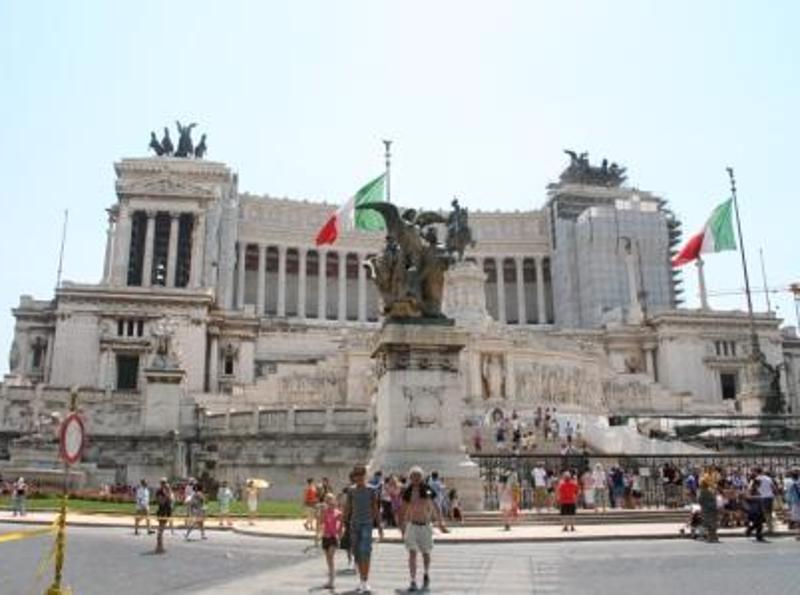Classics 304: Eternal Rome Digital Portfolio
The Italian Risorgimento is one of the most pivotal parts of Italian history. It is the unification of the Italian city states into one nation as the Italian kingdom and it represents the creation of the Italy we see today. The French revolution is what stoked the coals of change in Italy as it did with many other European countries. Off the heels of this revolution began a tumultuous time in Italy going from 1815 to 1871 when Rome was declared the capital of the Kingdom of Italy. This building represents to the Roman people a glaring reminder of the tumultuous past they have overcome in order to become the country they are today. The building was completed in 1925 and dedicated to Victor Emmanuel, the first king of unified Italy. The Roman citizens don’t like this building very much however. In order to build it a large area of the Capitoline hill was destroyed which housed a medieval neighborhood on it. It is also seen as an eyesore with its boxy and pompous design with blaringly white marble jutting out over the whole of the city not fitting in with the beautiful remains of antiquity that are scattered all around it.
kashford
22 chapters
16 Apr 2020
Chapter 17: The Wedding Cake
The Italian Risorgimento is one of the most pivotal parts of Italian history. It is the unification of the Italian city states into one nation as the Italian kingdom and it represents the creation of the Italy we see today. The French revolution is what stoked the coals of change in Italy as it did with many other European countries. Off the heels of this revolution began a tumultuous time in Italy going from 1815 to 1871 when Rome was declared the capital of the Kingdom of Italy. This building represents to the Roman people a glaring reminder of the tumultuous past they have overcome in order to become the country they are today. The building was completed in 1925 and dedicated to Victor Emmanuel, the first king of unified Italy. The Roman citizens don’t like this building very much however. In order to build it a large area of the Capitoline hill was destroyed which housed a medieval neighborhood on it. It is also seen as an eyesore with its boxy and pompous design with blaringly white marble jutting out over the whole of the city not fitting in with the beautiful remains of antiquity that are scattered all around it.

1.
Introduction
2.
Chapter One: The Gemini Statues
3.
Chapter 2: The Largo Argentina
4.
Chapter Three: The Temple of Jupiter
5.
Chapter 4: The Via Sacra
6.
Chapter Five: The Colosseo
7.
Chapter 6: Statue of Augustus
8.
Chapter Seven: The Arch of Titus
9.
Chapter 8: Constantine's Basilica
10.
Chapter Nine: The Tiber River
11.
Chapter 10: The Sarcophagi
12.
Chapter 11: Caesars Forum
13.
Chapter Twelve: St. Peters Basilica
14.
Chapter 13: Roman Sewers
15.
Chapter Fourteen: Egyptian Obelisk
16.
Chapter 15: The Pantheon
17.
Chapter Sixteen: Bernini Bridge
18.
Chapter 17: The Wedding Cake
19.
Chapter Eighteen: The Mussolini Window
20.
Chapter 19: Basilica of Saint Lawrence
21.
Chapter 20: The Piazza del Popolo
22.
Conclusion: The more things change